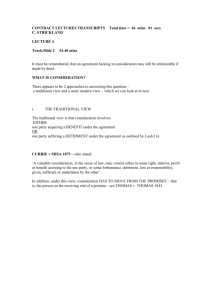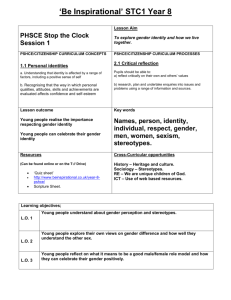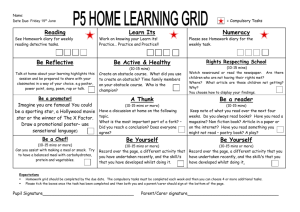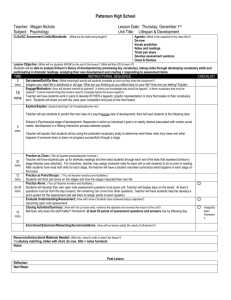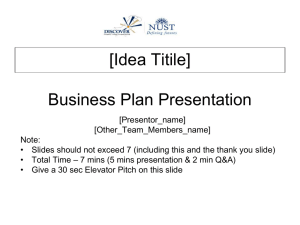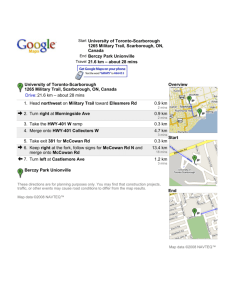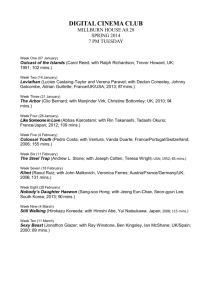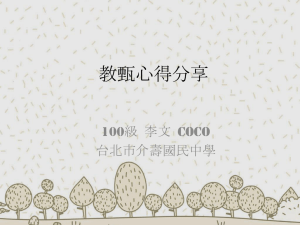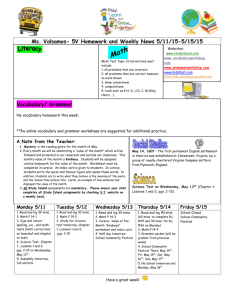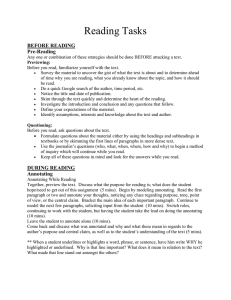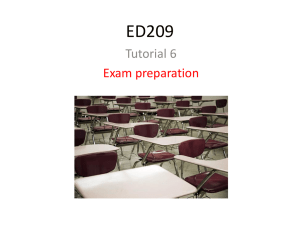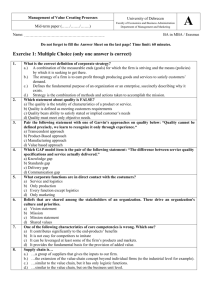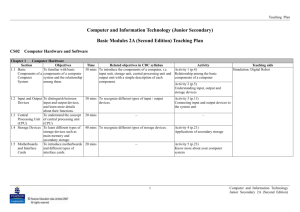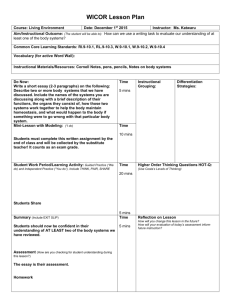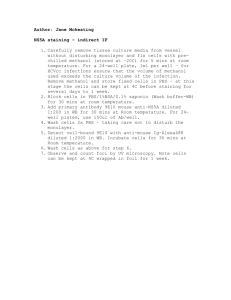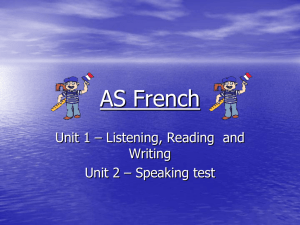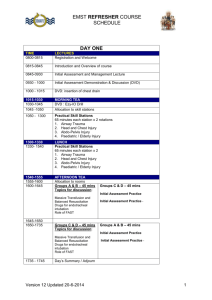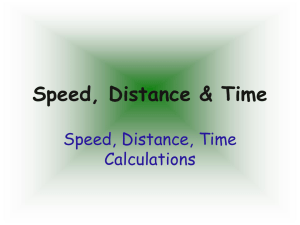Plants lesson 1
advertisement
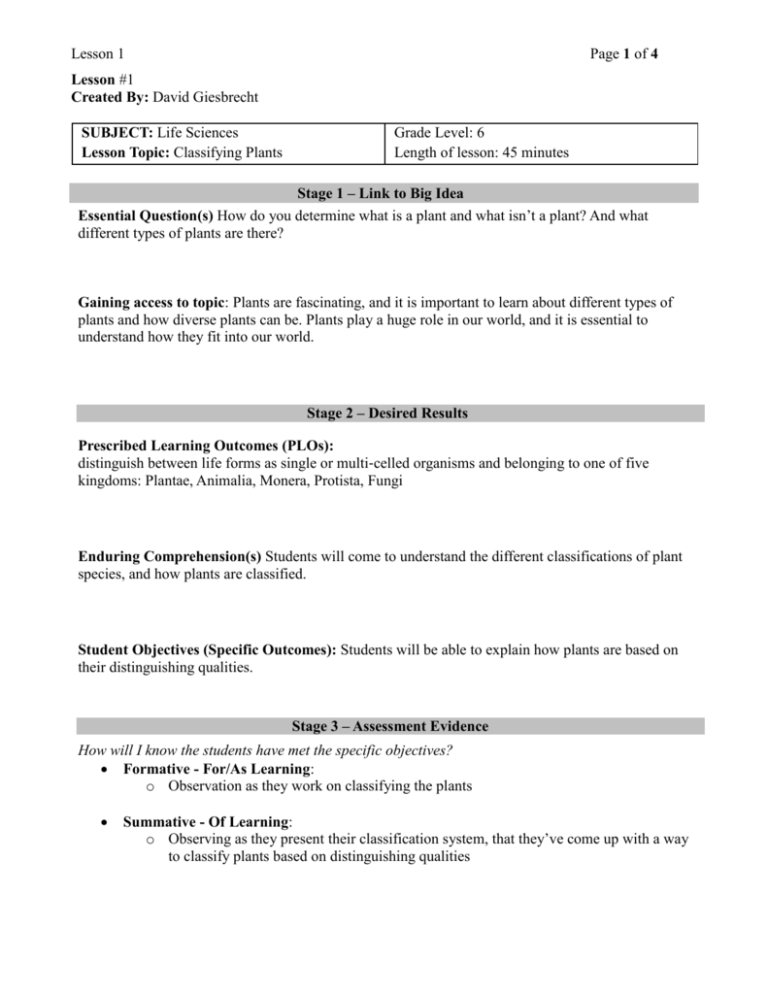
Lesson 1 Page 1 of 4 Lesson #1 Created By: David Giesbrecht SUBJECT: Life Sciences Lesson Topic: Classifying Plants Grade Level: 6 Length of lesson: 45 minutes Stage 1 – Link to Big Idea Essential Question(s) How do you determine what is a plant and what isn’t a plant? And what different types of plants are there? Gaining access to topic: Plants are fascinating, and it is important to learn about different types of plants and how diverse plants can be. Plants play a huge role in our world, and it is essential to understand how they fit into our world. Stage 2 – Desired Results Prescribed Learning Outcomes (PLOs): distinguish between life forms as single or multi‐celled organisms and belonging to one of five kingdoms: Plantae, Animalia, Monera, Protista, Fungi Enduring Comprehension(s) Students will come to understand the different classifications of plant species, and how plants are classified. Student Objectives (Specific Outcomes): Students will be able to explain how plants are based on their distinguishing qualities. Stage 3 – Assessment Evidence How will I know the students have met the specific objectives? Formative - For/As Learning: o Observation as they work on classifying the plants Summative - Of Learning: o Observing as they present their classification system, that they’ve come up with a way to classify plants based on distinguishing qualities Lesson 1 Page 2 of 4 Stage 4 – Learning Plan Preparation: Load videos so they’re ready to go. Section Structure of Lesson I. HOOK (to lesson topic) Watch 2 interesting videos of plants, to show how plants are fascinating and much more complex than we may realize. @ Time 5 mins Video 1: A plant that plays dead when you touch it. 1 min long http://www.wimp.com/sensitiveplant/ Video 2: Intelligent plant: leaves give off signal when eaten, which notifies nearby leaves that there is danger, which incites them to become poisonous as protection. 3 mins long http://www.wimp.com/intelligentplants/ II. MAIN 1. Brainstorm as a whole class, different types of plants. Any types of plant, trying to get a diverse collection of plant types. Teacher writes them all down on the board. 2. 10 mins After this is done, the teacher has the students work in groups of 4-5, and they must separate the plants into 3 to 4 groupings, however they think is 15 mins best. Teacher must explain that plants are classified based on distinguishing characteristics. Students need to base their classification on some form of characteristics that certain plants share. i.e. edible plants, underwater plants, plants based on color etc… They must give these groups a name. *Side note: if there are some plants that most students no nothing about, the teacher can take some time so that the student who said that plant can give a brief explanation of what it’s like. 3. Each group briefly present how they split up the plants. They can go to the front of the class, explain the different names of groupings, and what each group of plants is based on. III. Closure (to lesson Teacher closes by describing how plants are categorized based on defining characteristics. Next class we will be looking at how scientists have categorized topic) plants, and we will be practicing putting plants into the proper categories 10 mins 5 mins Lesson 1 Page 3 of 4 Considerations/Adaptations/Extensions: I have implemented multiple stages of the lesson, including a short video, class discussion, group work and a short presentation, so hopefully each student has an area where they feel confident Adaptations: Extensions: Students who aren’t as comfortable speaking in front of the class aren’t required to speak when their group presents. If a student prefers to work alone, they may come up with their own classification system independently Materials/Resources: What materials and resources/resource people will I need to gather? Materials: Resource people: Resources: Computer for video, Textbook, internet for video Whiteboard, markers, paper for students Lesson 1 Additional Notes: Page 4 of 4

